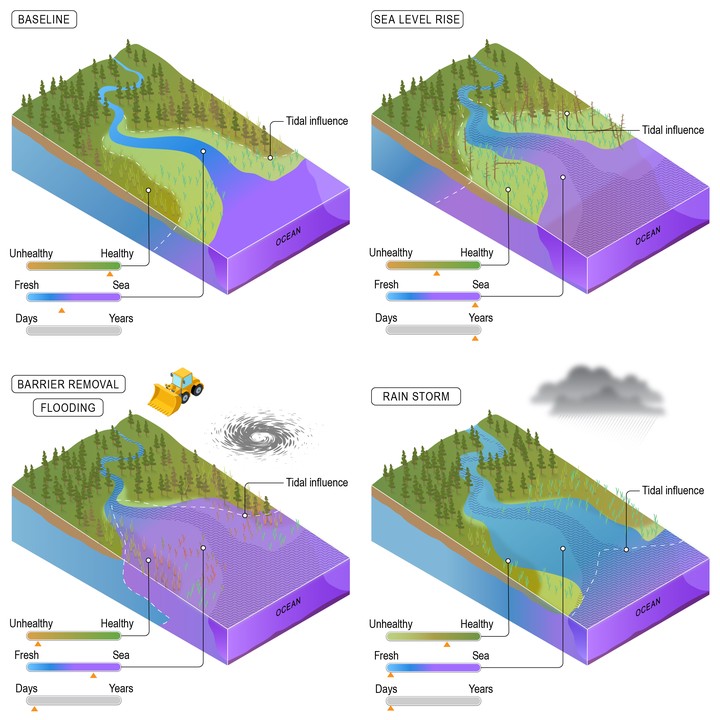Biogeochemical changes in estuaries

Abstract
The biogeochemical composition of materials suspended and dissolved in estuarine waters is substantially transformed by biological and abiotic processes as water from rivers and subterranean aquifers travels through estuaries to the coastal ocean. These estuarine biogeochemical dynamics directly influence the rate that estuaries sequester, consume, or export carbon, nutrients, and redox-sensitive elements. Biogeochemical signatures in the upper reaches of estuaries (e.g., low salinity) generally reflect characteristics of the rivers and groundwater draining into the estuary. The composition of organic matter (OM) where rivers meet estuaries is a mixture of terrigenous signatures dependent on watershed landscape features, aquatic signatures dependent on the prominence of freshwater primary productivity, and intermediate metabolites (i.e., byproducts of in situ transformation) of these terrigenous and aquatic OM sources. The prominence of aquatic primary production-derived OM and products of microbial decomposition generally increases towards the lower reaches of estuaries where they meet the coastal ocean (i.e., continental shelf). The nature of biogeochemical transformations occurring along estuarine gradients is closely coupled with factors that are poised to change under multiple compounding disturbances and stress factors related to both climate change and other anthropogenic global changes. This chapter describes the fundamental mechanisms that drive the transport, transformation, and storage of OM in estuaries and how these dynamics have and may continue to change in response to key disturbances and stressors related to climate change and other anthropogenic global changes including warming, intensifying hydrological extremes (e.g., droughts and floods), sea level rise, and acidification.